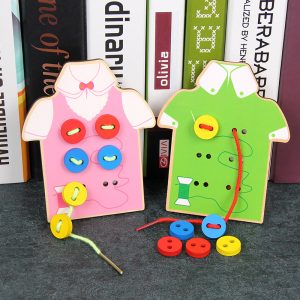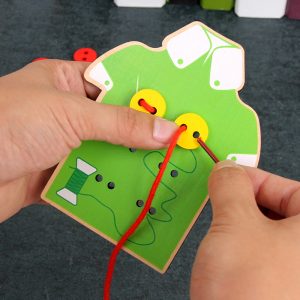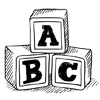How to choose wooden toys?
1. See if there is a peculiar smell
The usual wooden toys more or less have the taste of wood itself. If the taste is too strong, it means that the toy is too tightly sealed or the paint on the surface of the toy is in doubt. Assuming that the plastic packaging is too strict and the toy has a taste, you only need to put the toy in a ventilated and cool place for 2-3 days to deal with the taste question. Under normal circumstances, there should be no doubt as long as the toy paint is acquired through formal channels.
2. Is the appearance lubricated and free of burrs
Most of the wooden toys are handmade, so the smoother the toy, the more precise the workmanship. Parents should choose toys that are lubricated and have no burrs to prevent their babies from being stabbed by burrs during play.
This picture is provided by registered user “Warm·Life Home”, copyright notice feedback
3. Toy materials
The materials used in wooden toys are generally divided into three categories, one is imported rubber wood, beech wood, etc. This type of wood has fine texture, good hand feel, and durable, but the relative price is higher than that of ordinary toys. One type is linden wood, pine wood, etc. This type of wood has beautiful texture and light touch, and most toys are usually used. One type is splint toys, which are usually suitable for making jigsaw or flat toys. Parents can choose suitable wooden toys according to their preferences.
4. Check the age range
Each toy has a recommended age for children, and parents should choose toys that are suitable for your child’s age. Babies under 3 years of age have poor self-protection awareness and simply put toys in their mouths or nostrils. Therefore, when buying toys, you should choose toys with larger blocks, simple in appearance, and slippery in appearance; babies over 3 years of age have sensory experience now. More abundant, safety awareness is relatively increased, parents can choose more sophisticated toys.
5. Look at the toy label
This item mainly depends on whether the name of the manufacturer, the factory address, the telephone number, the primary materials or ingredients, the use of the age plan, the safety warnings, and whether there is a product qualification certificate, etc., and then to prevent accidental selection from bringing to the child Security risks. Look at the “3C” symbol. That is to see whether the product has passed the national compulsory product certification. Nowadays, six types of toy products, including baby carriages, electric toys, plastic toys, metal toys, projectile toys, and doll toys, have been included in the national “3C” compulsory certification program, and the symbol of “3C” must be clearly seen when purchasing.









